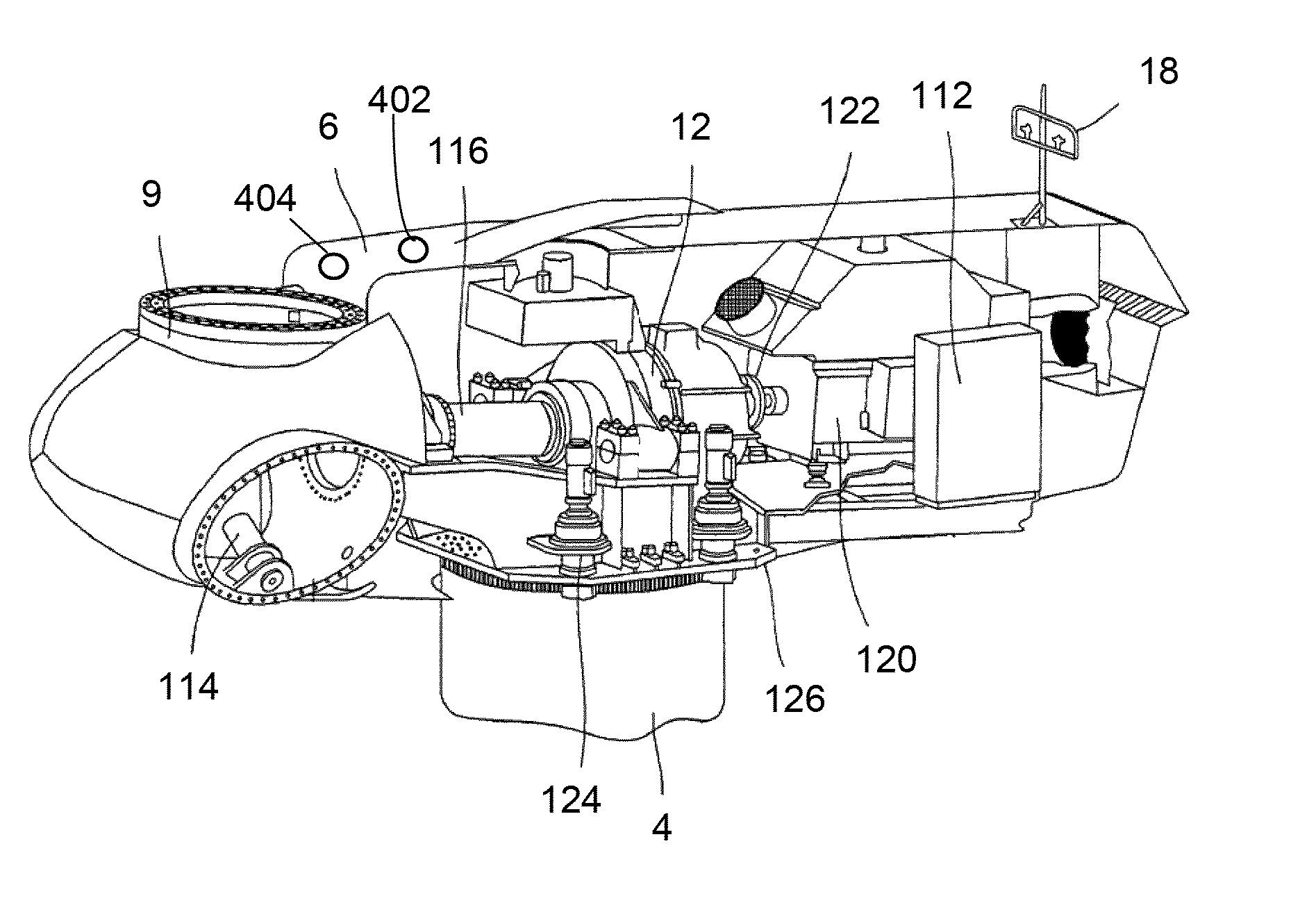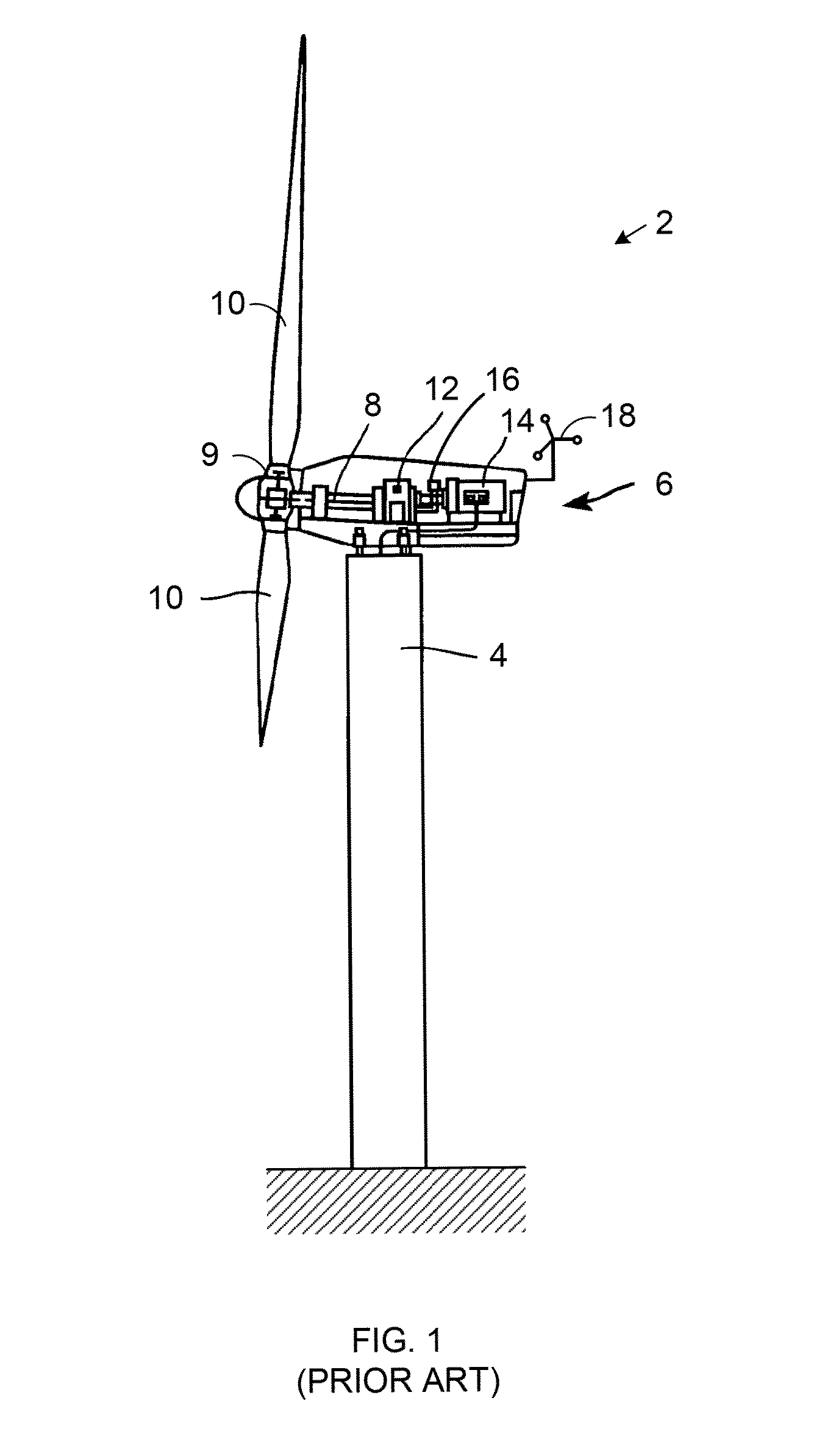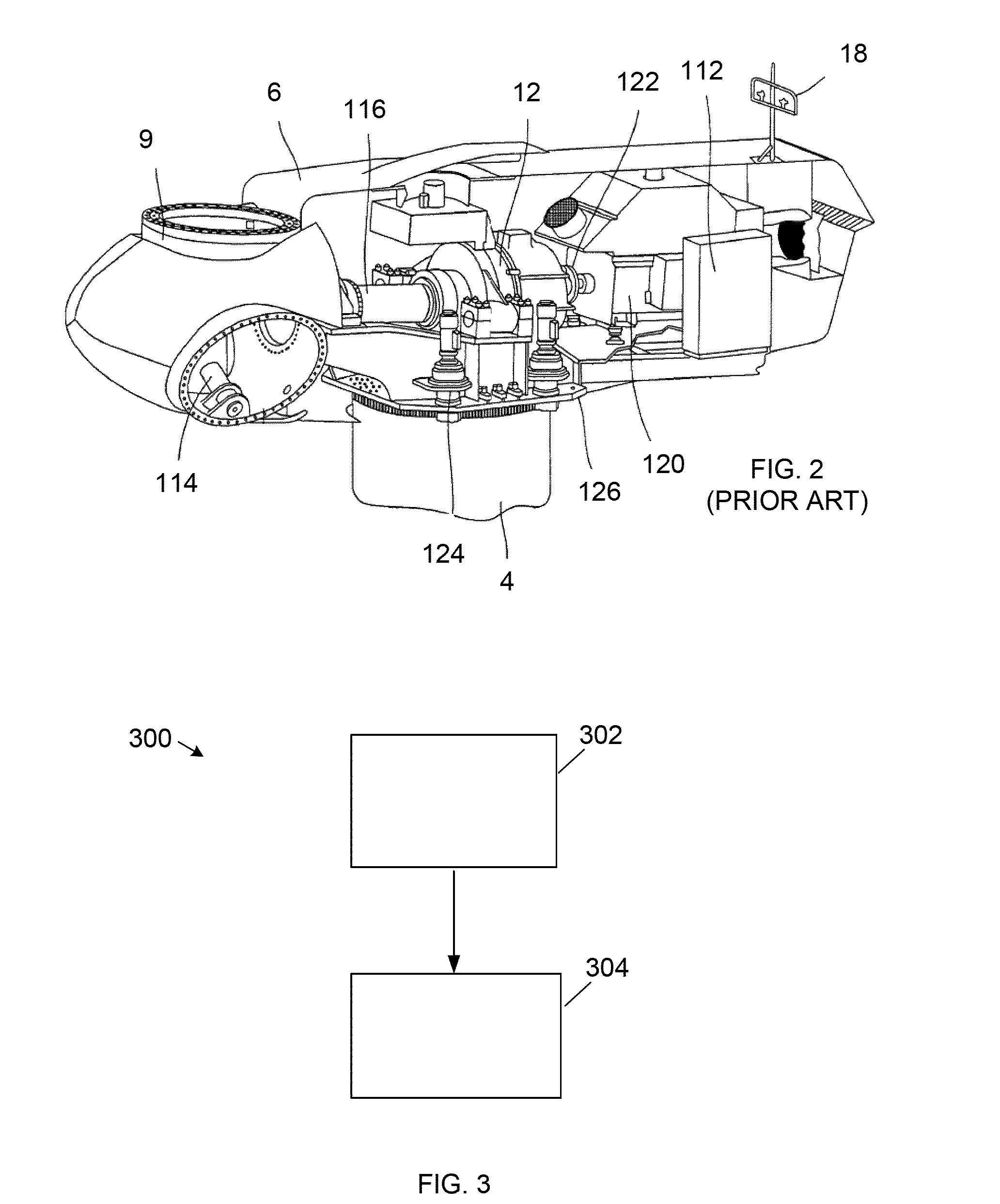Passive deicing for wind turbine blades
a wind turbine and blade technology, applied in the field of fluid reaction surfaces, can solve the problems of affecting the performance of the blade, the blade and/or other components of the wind turbine, and the blades of the wind turbine, and causing the blades to vibrate, damage the other blades, and/or injure personnel,
- Summary
- Abstract
- Description
- Claims
- Application Information
AI Technical Summary
Benefits of technology
Problems solved by technology
Method used
Image
Examples
Embodiment Construction
[0016]FIG. 3 is a schematic block diagram 300 illustrating various methods of operating a wind turbine 2 having at least one blade 10, such as is illustrated in FIG. 1. However, the method may also be applied to various other wind turbines. The method includes the step 302 of sensing an icing hazard for the at least one blade, and the step 304 of moving the at least one blade into a position to reduce the icing hazard.
[0017]The sensed icing hazard may be indicative of current icing of the blades and / or predictive of future icing of the blades. For example, a current or future icing hazard may be sensed with a sensor 402 as shown in FIG. 4. In various embodiments the icing sensor 402 may sense temperature, humidity, barometric pressure and / or other metrological information. Visual sensing may also be used. Icing may also be inferred from blade vibration, reduced power production, and / or other operating parameters of the wind turbine 2. Some or all of the information may then be proce...
PUM
 Login to View More
Login to View More Abstract
Description
Claims
Application Information
 Login to View More
Login to View More - R&D
- Intellectual Property
- Life Sciences
- Materials
- Tech Scout
- Unparalleled Data Quality
- Higher Quality Content
- 60% Fewer Hallucinations
Browse by: Latest US Patents, China's latest patents, Technical Efficacy Thesaurus, Application Domain, Technology Topic, Popular Technical Reports.
© 2025 PatSnap. All rights reserved.Legal|Privacy policy|Modern Slavery Act Transparency Statement|Sitemap|About US| Contact US: help@patsnap.com



